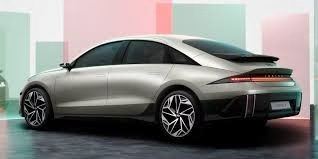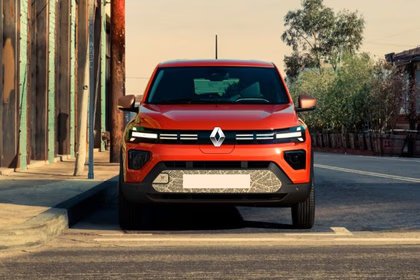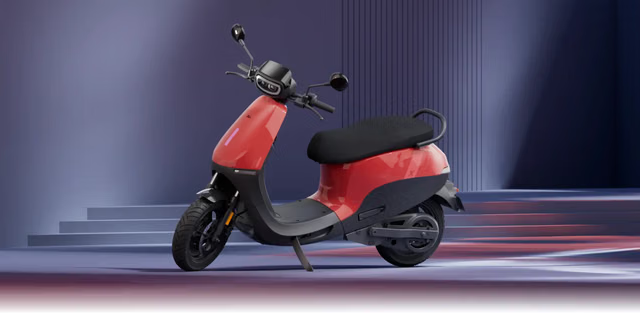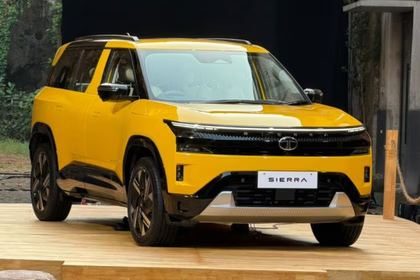Introduction
The era of the electric vehicle (EV) revolution is expected to begin in 2025. No longer limited to niche segments or early adopters, EVs are now centre stage in the global automotive sector, featuring state-of-the-art design, quick charging, autonomous functionality, and performance specifications that can match even the most advanced internal combustion engines.
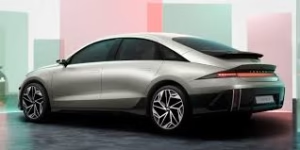
The vibrant ecosystem, Hyundai Ioniq 6 and Kia EV9—formerly underdog brands in the global automotive market—are now at the forefront with two powerful contenders: the futuristic and sophisticated Hyundai Ioniq 6 and the fearless, family-friendly Kia EV9. Both vehicles are built on Hyundai Motor Group’s sophisticated E-GMP platform, are all-electric, technologically packed, and positioned to redefine the way consumers think about daily EV usability.
These aren’t simply “electric versions” of current cars—they’re purpose-designed EVs designed from scratch, with aerodynamics, digital interfaces, quick-charging infrastructure, and over-the-air software updates at their heart. In a saturated EV market dominated by companies like Tesla, BYD, and traditional European automakers, Hyundai and Kia are making a significant statement. The Hyundai Ioniq 6 and Kia EV9 are solid additions to the EV lineup… or are they actual game changers that will change the industry in 2025 and beyond?
Current State of the EV Market
The electric car business in 2025 is no longer experimental—it’s mainstream. EV industry research estimates that more than 25% of all new vehicle sales globally in 2025 will be electric, with even deeper penetration in regions such as Europe, China, and the northern areas of North America.
- Battery technology has evolved dramatically, enabling faster charging, greater range, and better durability. Solid-state battery prototypes are entering pre-production, but lithium-ion remains dominant.
- Charging infrastructure has expanded rapidly, with urban fast-charging hubs, highway supercharging corridors, and home charging solutions becoming widely accessible.
- AI-powered software & OTA updates are now standard, making EVs more like smart devices than traditional vehicles.
- Automakers are intensely fighting to own the volume and premium EV segments—Tesla, BYD, Volkswagen, and newer Chinese players such as XPeng and NIO are among the leaders.
What Do EV Buyers Want in 2025?
- Range: The Minimum real-world range of 250–300 miles is the new norm.
- Fast Charging: 10-80% in less than 30 minutes should be expected, with road trips in mind.
- Practicality: Roomy interiors, high-end infotainment, and utilitarian cargo space are requirements.
- Design: EVs no longer hold back—customers are demanding futuristic yet practical design.
- Affordability & Reliability: Customers want EVs not only to feel premium, but also to be reasonably priced and low-maintenance.
Where are the Hyundai Ioniq 6 and Kia EV9?
Hyundai and Kia have been quietly developing one of the most competitive EV lineups in the world. Their E-GMP platform, which both the Hyundai Ioniq 6 and EV9 share, provides:
- 800V ultra-fast charging
- Flat-floor design for spacious cabins
- Dual-motor AWD capability
- Future-proof technology with OTA updates and smart driver assistance
Hyundai’s Ioniq sub-brand and Kia’s stand-alone EV lineup aren’t just catching up—they’re pioneering.
Hyundai Ioniq 6: The Streamlined Electric Sedan
In a world of boxy crossovers and default designs in every electric vehicle, the Hyundai Ioniq 6 is a chiselled, forward-looking electric sedan that takes risks and defies convention. Drawing inspiration from retro streamliner cars of the 1930s and infusing them with groundbreaking contemporaneity, the Hyundai Ioniq 6 blends smooth design with potent EV performance.
- Design & Aesthetics
The Hyundai Ioniq 6 is among the most aerodynamically optimized production vehicles on the planet, boasting a drag coefficient of only 0.21 Cd, comparable to some of the top Tesla models and even some Lucid models.
Exterior Highlights: Effortless, curved sheet metal glides smoothly from front to rear, creating a fluid, liquid-like appearance. LED pixel lighting, active air flaps, and flush door handles all contribute to both performance and visual appeal.
Futuristic Cabin: The cabin is more like a tech lounge on the inside. It features dual 12.3-inch panoramic displays for the digital instrument cluster and infotainment, as well as ambient lighting with 64 available colours. Additionally, it incorporates eco-friendly materials, including bio-PET fabric and recycled plastics.
Minimalist Design Language: The dashboard is uncluttered and button-light, with emphasis on the driver’s digital experience. Optional digital side mirrors (available in some markets) contribute to its spaceship-like ambience.
2. Performance & Range
- Standard 53 kWh battery (RWD) — ideal for urban commuters.
- Long-range 77.4 kWh battery — available in both RWD and AWD formats.
- The twin-motor AWD model is suitable for 320 hp, 605 Nm torque, and is capable of accelerating 0–60 mph in roughly 4.4 seconds.
- RWD long-range model has a range of up to 361 miles (EPA) or ~580 km (WLTP), depending on wheels and conditions.
- With 800V architecture, it is equipped with ultra-fast charging: 10–80% charging in just 18 minutes via a 350 kW DC fast charger.
3. Pros & Cons
Strengths & Limitations
- Sleek, high-quality looks that turn heads and depart from conventional EV stereotypes.
- Great efficiency and range, particularly for a non-SUV.
- Lightning-fast charging potential with market-leading technology.
- Packed with tech: OTA updates, sophisticated driver-assist technologies, digital keys, and ambient personalization.
- Restricted rear headroom thanks to sloping roofline—tall riders might feel uncomfortable.
- Trunk space is limited (~11.2 cubic feet), and the frunk is very small (<0.6 cu ft)—not ideal for road-trippers or families.
- Pricier than ICE sedans in its class but competitive within the EV class.
The Hyundai Ioniq 6 is a bold declaration—a vehicle for those who desire performance alongside personality. Though perhaps not best suited to carrying freight or family camping excursions, it surpasses in nearly everything else: styling, technology, speed, and forward-thinking features.
Kia EV9: The Bold 3-Row Electric SUV
EVs appeal to single drivers or small households; the Kia EV9 enters 2025 as one of the very few electric cars that can replace a full-size SUV without compromise. It has room for up to seven, a rugged yet premium appearance, and exceptional electric performance, thereby harmonizing practicality and innovation.
- Exterior & Interior Space
- Intended to be large, bold, and futuristic, the Kia EV9 pairs classic SUV posture with contemporary EV style.
- Exterior Design: The EV9 has a high-riding, boxy look with crisp lines, angular LEDs, and a very distinct road presence. Although large, it is aerodynamic for its segment due to sculpted body lines and concealed door handles.
- 7-Seat Configuration: The cabin is roomy and versatile on the inside. You have three rows of seats with 6- or 7-seat options, plus second-row swivel seats (available in some trims), ideal for interacting with the family during stops.
- Cargo Space: The EV9 offers generous cargo capacity—333 litres with all seats up, expandable to over 2,300 litres with seats folded. This makes it ideal for road trips, grocery hauls, or transporting sports equipment.
2. Powertrain & Driving Experience
The Hyundai Ioniq 6 and the EV9 offer strong performance for their size, along with the smooth, quiet, and responsive driving you’d expect from a premium EV.
- Standard RWD: ~200–215 hp, ideal for everyday urban and suburban driving.
- Dual-Motor AWD (GT-Line): ~380 hp, ~600 Nm torque; 0–100 km/h in approximately 5 seconds—pretty quick for a full-size SUV.
- WLTP-rated as high as 318–350 miles (512–563 km), depending on trim and wheel size.
- Real-world range is approximately 270–300 miles, class-competitive.
- Compatible with 800V ultra-fast charging, replenishing up to 80% using a 350 kW DC charger.
3. Advanced Tech & Safety
The EV9 is among the most technologically advanced family EVs available, offering both innovative features and robust safety systems.
- Dual 12.3-inch digital screens plus a 5-inch climate control screen.
- OTA (Over-the-Air) software updates to introduce new features or enhance performance after purchase.
- AI-powered voice assistant, connected services, and customizable driving profiles.
- Tri-zone climate control, USB-C ports in each row, and second-row seat ventilation.
- Optional relaxation mode for the seats, integrated sunshades, and smart power tailgate.
- Features Kia’s newest ADAS suite, such as Highway Driving Assist 2, Smart Cruise Control, Lane Keep Assist, and Auto Parking.
- 360° camera, blind-spot view monitor, and rear cross-traffic avoidance system provide safety at all times.
Why It Matters
The Kia EV9 is not only a fantastic electric SUV; its goal is to replace the gas-powered full-size SUVs that families have depended on for generations. With authentic 3-row comfort, high infotainment, and a tech-savvy experience, it’s one of the most comprehensive family EVs of 2025. It ain’t cheap, and its bulk could prove tricky in urban space constraints—but for those willing to go electric without giving up usability, the EV9 is a top pick.
Side-by-Side Comparison
| Feature | Hyundai Ioniq 6 | Kia EV9 |
| Body Style | Sleek, aerodynamic sedan | Bold, full-size SUV (7-seater) |
| Performance | Sporty drive with low center of gravity | Powerful and utility-focused for families |
| Range | Up to 342 miles (EPA est.) | Up to 318 miles (WLTP est.) |
| Charging Time | ~18 minutes (10–80% at 350 kW) | ~24 minutes (10–80% at 350 kW) |
| Seating Capacity | 5 passengers | 6 or 7 passengers |
| Infotainment | Dual 12.3″ displays, ambient lighting | Dual 12.3″ displays + 5″ HVAC screen |
| Platform | Hyundai E-GMP | Hyundai E-GMP |
| Drive Options | RWD / AWD | RWD / AWD (GT-Line ~380 hp) |
| Top Speed / 0–60 | ~4.4 sec (AWD) | ~5.3 sec (AWD GT-Line) |
| Price Range | ~$38,000–$50,000 (USD) | ~$55,000–$75,000+ (USD) / Rs 1.3Cr+ (India) |
Market Impact: Are They Disruptors?
The electric vehicle industry matures, releasing a capable EV alone is no longer sufficient—automakers need to bring vehicles that connect with actual customers, differentiate themselves from stiff international competition, and alter consumer expectations.
The Hyundai Ioniq 6 is designed for city professionals, high-tech early adopters, and environmentally minded commuters who desire something both fashionable and functional. It boasts space-age looks, frugality, and rapid charging, making it ideal for urban and suburban use.
The Kia EV9, however, is aimed at families and utilitarian buyers. With real 3-row seating, elevated ride height, massive cargo space, and a utilitarian interface, it appeals to buyers upgrading from ICE SUVs such as the Toyota Fortuner, Ford Explorer, or even premium choices like the Volvo XC90 and Audi Q7. They collectively demonstrate Hyundai and Kia’s capability to address various buyer personas with purpose-designed EVs.
Countering Tesla, BYD & Traditional Competitors
- A crowded worldwide EV marketplace ruled by such names as Tesla, BYD, Volkswagen, BMW, Hyundai, and Kia is being more and more noted as leaders, not followers.
- Against Tesla: The Hyundai Ioniq 6 competes head-to-head with the Model 3, providing more expressive design, comparable range, and even quicker charging. The EV9 provides Tesla something it has yet to deliver: a large, genuinely usable 7-seat SUV with a physical, family-oriented interior.
- Against BYD & Chinese brands: Chinese automakers are aggressively promoting affordable, feature-filled EVs, but Hyundai and Kia have superior global brand trust, post-sales service, and mature safety features, which make them more attractive in most markets overseas.
- Against incumbent automakers: Mercedes-Benz, Ford, and Toyota are also on the cusp of switching to EVs, but with sporadic success. Hyundai and Kia, on the other hand, have fully committed to electrification and already have established EV platforms, software ecosystems, and an EV-first design language. Simply put, Hyundai and Kia are beating competitors in speed and execution.
Challenges & Considerations
The Hyundai Ioniq 6 and Kia EV9 have been in the spotlight for their innovation and performance.
- The Hyundai Ioniq 6 begins in the mid-$30,000 USD segment, but high-end variants may hit $50,000 or higher. In countries such as India, its price remains premium.
- The Kia EV9, however, is in the luxury SUV segment, with prices over $75,000 or Rs 1.3 crore+. While it is warranted based on its size and features, it is beyond the reach of many mass-market customers.
- In well-established markets (e.g., Europe, South Korea, and most of the U.S.), public fast chargers are widely present, accommodating the Hyundai Ioniq 6 and EV9’s 800V high-speed charging.
- In underdeveloped economies—e.g., India, Brazil, or parts of Southeast Asia—charging points are still scarce, unreliable, or slow.
- As long as home charging is not more accessible and public networks are widely present and unified, many customers might not be willing to invest entirely in EVs.
Software Reliability & Long-Term Support
- EVs increasingly have software-driven, over-the-air updates, infotainment systems, and digital features form the core of the ownership experience.
- Hyundai and Kia have spent money on their connected services, but they’re not yet there in terms of trust compared to traditional software-heavy giants such as Tesla or Apple CarPlay-based platforms.
- Software bugs, delayed updates, and early glitches have been encountered by some early users, especially for features such as self-parking, voice control, or digital keys.
- Long-term reliability of autonomous features, driver assist systems, and battery health monitoring is a mystery to consumers committing to a 7–10 year vehicle cycle.
Are Buyers Ready to Adopt Them?
- Early adopters and city drivers in industrialized countries are already on board.
- But mass customers, particularly outside of cities or in developing nations, have apprehensions remaining: range, resale value, charging, and serviceability.
- Learning, test drives, and real-world experience will be essential to moving the consumer mindset at scale.
The Hyundai Ioniq 6 and EV9 are technologically stunning and ready for the market, but mass adoption still faces real-world headwinds. Pricing, infrastructure, and faith in software ecosystems need to change to convert game-changing possibilities into reality for the masses..
Conclusion
Hyundai Ioniq 6: A Fashionable Tesla Challenger with Depth
The Hyundai Ioniq 6 becomes a legitimate Tesla Model 3 competitor—but with an aesthetic personality all its own. It’s for shoppers who desire performance and fuel efficiency without the cold, stripped-down aesthetic of some competitors. The Hyundai Ioniq 6 demonstrates that Hyundai can not only match Tesla—it can also outstyle and out-value it in most important respects.
Kia EV9: The Electric SUV We’ve Been Waiting For
The Kia EV9 accomplishes something few others have been able to do—it introduces full-size, family-capable practicality to the EV age. With its three rows, rugged styling, and premium features, it fills a significant gap between luxury electric SUVs (such as the Rivian R1S or Mercedes EQS SUV) and mass-market contenders. And more significantly, it doesn’t feel like a retrofit but rather an EV designed from the ground up.
The Hyundai Ioniq 6 and EV9 are more than just new vehicles—they’re indicators of a shift in power in the automotive sector. The Hyundai Ioniq 6 and Kia EV9 are no longer underdogs. They’re now making waves, winning design awards, and demonstrating that they can out-engineer and out-position some of the world’s largest brands.
FAQs
Q: Which EV is best for families—the Hyundai Ioniq 6 or the Kia EV9?
The Kia EV9 offers a better value for families, thanks to its 3-row seating, spacious cargo compartment, and family-centric features, including rear climate control and high-end safety features. The Hyundai Ioniq 6 is best suited for city dwellers or small families.
Q: How quickly do these EVs charge on ultra-fast charging stations?
Both vehicles use Hyundai’s 800V E-GMP platform:
- Hyundai Ioniq 6: 10–80% in ~18 minutes
- Kia EV9: 10–80% in ~24 minutes
- (Using a 350 kW DC fast charger under optimal conditions.)
Q: Do the Hyundai Ioniq 6 and EV9 support over-the-air (OTA) software updates?
Yes, both models offer OTA updates for system improvements, infotainment, and some driver assist features, keeping them up-to-date over time without visiting a dealership.
Q: Are these EVs available in India or globally?
- The Kia EV9 is slated for India (launching in 2024) as a CBU import, with an estimated cost of approximately Rs 1.3 crore.
- The Hyundai Ioniq 6 is anticipated but has not yet been officially launched in India. They are both on sale in North America, Europe, and South Korea.
Q: Can these EVs be said to be future-proof?
To some degree—yes. On a modular platform with OTA upgrades, V2L capability, and battery offerings that scale, they’re designed to remain relevant for a few years. But the pace of EV innovation means no vehicle is completely future-proof in the long term.

